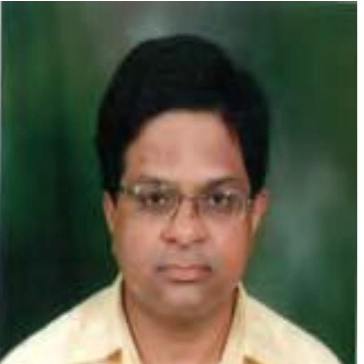International Journal of Image, Graphics and Signal Processing (IJIGSP)
IJIGSP Vol. 4, No. 8, 8 Aug. 2012
Cover page and Table of Contents: PDF (size: 583KB)
Texture Classification Based on Texton Features
Full Text (PDF, 583KB), PP.36-42
Views: 0 Downloads: 0
Author(s)
Index Terms
Texture image, Texton pattern, Classification
Abstract
Texture Analysis plays an important role in the interpretation, understanding and recognition of terrain, biomedical or microscopic images. To achieve high accuracy in classification the present paper proposes a new method on textons. Each texture analysis method depends upon how the selected texture features characterizes image. Whenever a new texture feature is derived it is tested whether it precisely classifies the textures. Here not only the texture features are important but also the way in which they are applied is also important and significant for a crucial, precise and accurate texture classification and analysis. The present paper proposes a new method on textons, for an efficient rotationally invariant texture classification. The proposed Texton Features (TF) evaluates the relationship between the values of neighboring pixels. The proposed classification algorithm evaluates the histogram based techniques on TF for a precise classification. The experimental results on various stone textures indicate the efficacy of the proposed method when compared to other methods.
Cite This Paper
U Ravi Babu, V Vijay Kumar, B Sujatha,"Texture Classification Based on Texton Features", IJIGSP, vol.4, no.8, pp.36-42, 2012. DOI: 10.5815/ijigsp.2012.08.05
Reference
[1]D. A. Forsyth and J. Ponce. Computer Vision: A modern approach. Prentice Hall, 2002
[2]Eswar Reddy, B., Vijaya Kumar, V. et al. (2007). Texture Classification by Simple Edge Direction Movements. International Journal of Computer Science and Network Security, vol. 7, no.11, pp. 221-225
[3]G. Smith and I. Burns. Measuring texture classification algorithms. PRL, 18(14):1495-1501, December 1997.
[4]Fogel and D. Sagi. Gabor filters as texture discriminator. BioCyber, 61:102-113, 1989
[5]M. Varma. and A. Zisserman. Classifying images of materials: Achieving viewpoint and illumination independence. In ECCV02, page III: 255 ff., 2002.
[6]R. Chellappa and S. Chatterjee. Classification of textures using gaussian markov random fields. ASSP, 33:959-963, August 1985
[7]T. K. Leung and J. Malik. Representing and recognizing the visual appearance of materials using three-dimensional textons. IJCV, 43(1):29-44, June 2001
[8]Atkinson, P. M. and Lewis, P. (2000). Geostatistical classification for remote sensing: An introduction. Comput. Geosci., Vol. 26, pp. 361–371
[9]J. Mao and A. K. Jain. Texture classification and segmentation using multiresolution simultaneous autoregressive models. Pattern Recogn., 25(2):173-188, 1992
[10]Klatzky, R.L., C. Reed and S. Lederman. 1987. There's More to Touch Than Meets the Eye: The Salience of Object Attributes for Haptics With and Without Vision. Journal of Experimental Psychology. General. Vol. 116, No. 4, pp. 356-69
[11]M. Varma. and A. Zisserman. Texture classification: are filter banks necessary? In CVPR03, pages II: 691-698, 2003.
[12]Richards, J. A. and Xiuping, J. (1999). Remote SensingDigital Analysis: An Introduction. Germany: Springer-Verlag, Vol.3, pp.363-383.
[13]T. Ojala, M. Pietikainen, and D. Harwood. A comparative study of texture measures with classification based on feature distributions. Pattern Recognition, 29(1):51-59, January 1996
[14]Woodcock, C. E., Strahler, A. H. and Jupp, D. L. B. (1988). The use of variograms in remote sensing II: Real digital images, Remote Sens. Environ., Vol. 25, pp. 349-379
[15]Woodcock, C. E. and Strahler, A. H. (1987). The factor of scale in remote sensing. Remote Sens. Environ., Vol. 21, pp. 311-332
[16]Curran, P. J. (1988). The Semivariogram in Remote Sensing: An Introduction. Remote Sens. Environ., vol. 24, pp. 493-507
[17]Vijaya Kumar, V., Eswar Reddy, B., et al. (2008). Classification of Textures by Avoiding Complex Patterns. Journal of Com. Science, vol. 4(2), pp.133-138
[18]A. S. Hornby, "Oxford Advanced Learner's Dictionary of Current English," 6 ed.: Oxford University Press, 2000
[19]Gibson, J.J. 1950. The Perception of Visual Surfaces. American Journal of Psychology. Vol. 63. pp. 367-385
[20]McCloy, K.R. (2002). Analysis and removal of the effects of crop management practices in remotely sensed images of agricultural fields. Int. J. Remote Sens., vol. 23, pp. 403-416.
[21]Vijaya Kumar, V., Eswar Reddy, B. et al. (2007). An Innovative Technique of Texture Classification and Comparision based on Long Linear Patterns. Journal of Computer Science, Science Publications, vol. 3(8), pp.633-638
[22]Suresh, A. , U S N Raju and Vijaya Kumar, V. et al. (2010) An Innovative Technique of Stone Texture Classification Based on Primitive Pattern Units, Journal of Signal and Image Processing (Vol.1-2010/Iss.1 pp. 40-45
[23]Moody, A. and Johnson, D. M. (2001). Land-surface phenologies from AVHRR using the discrete fourier transform. Remote Sens. Environ., Vol. 75, pp. 305-323
[24]Burrough, P. A. (1983). Multiscale sources of spatial variation in soil, the application of fractal concepts to nested levels of soil variation. J. Soil Sci., Vol. 34, pp. 577–597
[25]Julesz, B. and J.R. Bergen. 1983. Textons, the fundamental elements inpreattentive vision and perception of textures, Bell System Tech. J. 62, 1619-1646
[26]Peder, Klith Bocher. and Keith, R. McCloy. (2006). The Fundamentals of Average Local Variance: Detecting Regular Patterns. IEEE Trans. on Image Processing, vol. 15, pp. 300-310.
[27]Suresh, A. , U S N Raju and Vijaya Kumar, V. et al. (2010) An Innovative Technique of Stone Texture Classification Based on Primitive Pattern Units, Journal of Signal and Image Processing (Vol.1-2010/Iss.1 pp. 40-45
[28]Lederman, S.J., B. Jones and G. Thorne. 1986. Perception of Texture by Vision and Touch: Multidimensionality and Intersensory Integration. Journal of Experimental Psychology: Human Perception and Performance. Vol. 12, No. 2, pp. 169-180.
[29]Vijaya Kumar, V., Raju, U.S.N. et al. (2009). Employing Long Linear Patterns for Texture Classification relying on Wavelets. International Journal of Graphics Vision and Image Processing, vol. 8, no. 5, pp. 13-21
[30]Vijaya Kumar, V., et al. (2008). A New Method of Texture Classification using Wavelet Transforms based on Primitive Patterns. International Journal of Graphics Vision and Image Processing, vol. 8, no. 2, pp. 21-27
[31]B. Sujatha, Dr.V.VijayaKumar, M Chandramohan, “Rotationally Invariant Texture Classification using LRTM based on Fuzzy Approach”, International Journal of Computer Applications (0975 – 8887) Volume 33– No.4, November 2011.
[32]B. Sujatha, Dr.V.VijayaKumar, Dr.P. Harini “A New Logical Compact LBP Co-Occurrence Matrix for Texture Analysis”, International Journal of Scientific & Engineering Research, Volume 3, Issue 2, February-2012
[33]Treitz, P. (2001). Variogram analysis of high spatial resolution remote sensing data: An examination of boreal forest ecosystems. Int. J. Remote Sens., vol. 22, pp. 3895-3900
[34]Julesz B., ―Textons, The Elements of Texture Perception, and their Interac-tions,” Nature, vol.290 (5802): pp.91-97, 1981.
[35]Julesz B., ―Texton gradients: the texton theory revisited,” Biological Cybernet-ics, vol.54 pp.245–251, 1986
[36]Suresh A and Vijaya Kumar V. et al., “Pattern Based Classification of Stone Textures on a Cubical Mask,” International Journal of Universal Computer Sciences (Vol.1-2010/Iss.1) pp. 4-9.


